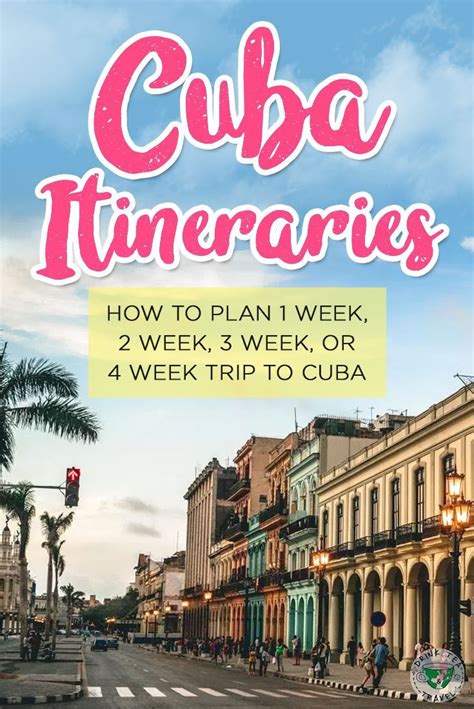Easy Access to Cuba: Planning Your Perfect Itinerary
Cuba, a vibrant island nation frozen in time, yet brimming with modern energy, beckons travelers with its captivating blend of colonial architecture, sun-drenched beaches, and rich cultural heritage. While access may have once been challenging, planning a trip to Cuba is now more straightforward than ever. This comprehensive guide will help you navigate the process, crafting an itinerary tailored to your interests and ensuring a seamless and unforgettable Cuban adventure.
How to Get to Cuba:
The easiest way to reach Cuba is by air. Numerous international airlines offer flights to Havana (HAV), the country's capital, and other major cities like Varadero (VRA), Santiago de Cuba (SCU), and Holguin (HOG). Booking flights in advance, especially during peak season, is recommended to secure the best deals.
What are the Best Times to Visit Cuba?
H3: Avoiding Hurricane Season
The ideal time to visit Cuba is during the dry season, from November to April. These months offer pleasant temperatures, lower humidity, and less rainfall, making them perfect for exploring the island's diverse landscapes and enjoying outdoor activities. Remember to avoid the hurricane season (June to November), which can significantly impact travel plans.
H3: Shoulder Seasons Offer Great Value
The shoulder seasons (May-June and September-October) offer a sweet spot: fewer crowds than peak season but still generally favorable weather. You can often find better deals on flights and accommodations during these months.
What Visa Do I Need for Cuba?
H3: Tourist Cards are Typically Required
Most nationalities require a tourist card (also known as a visa) to enter Cuba. These cards are usually obtained through your airline or a designated travel agency. Ensure you check the specific visa requirements for your nationality well in advance of your trip. Requirements can vary depending on your citizenship.
Getting Around Cuba:
H3: Classic Cars and Modern Transport
Cuba offers a diverse range of transportation options. From iconic classic cars to modern buses and taxis, there’s a way to suit every budget and travel style. Consider renting a car for independent exploration, but be prepared for potentially challenging road conditions in some areas. Domestic flights are also a good option for covering long distances efficiently. For shorter hops within cities, utilizing local buses (guaguas) or taxis is usually inexpensive and effective.
What to Pack for Cuba:
H3: Essential Items for a Smooth Trip
Pack light, comfortable clothing suitable for warm weather. Don't forget sunscreen, insect repellent, a hat, and sunglasses. Consider bringing a reusable water bottle to stay hydrated. While Cuban currency is readily available, it's a good idea to have some US dollars readily available for tips and certain transactions, though credit card usage is increasingly prevalent in tourist areas.
Where to Stay in Cuba:
H3: A Variety of Accommodation Options
Cuba offers a wide range of accommodation, from charming casas particulares (private homes offering rooms) to international hotels in major cities and resorts in beach areas. Booking in advance, especially during peak season, is recommended, particularly for casas particulares.
What to See and Do in Cuba:
H3: Havana's Historical Charm
Havana, a UNESCO World Heritage site, boasts stunning colonial architecture, vibrant nightlife, and a rich history. Explore Old Havana's cobblestone streets, visit the iconic Malecon, and enjoy live music in a traditional paladar (private restaurant).
H3: Beyond Havana: Exploring the Island's Diversity
Beyond Havana, Cuba offers diverse experiences. Relax on the pristine beaches of Varadero, explore the lush landscapes of Viñales Valley, discover the historical significance of Santiago de Cuba, or immerse yourself in the culture of Trinidad.
What is the Currency in Cuba?
H3: Understanding the Cuban Peso System
Cuba has two currencies: the Cuban Peso (CUP), used primarily by locals, and the Cuban Convertible Peso (CUC), used mostly by tourists. While CUC is more common in tourist areas, it’s always good to be prepared to handle both currencies. Many establishments will accept credit cards, though it's wise to have some cash on hand.
Is Cuba Safe for Tourists?
H3: General Safety Guidelines
Cuba is generally safe for tourists. However, exercising common sense precautions, such as being aware of your surroundings and avoiding displaying expensive jewelry, is always recommended.
Planning Your Perfect Cuban Itinerary:
To plan your perfect Cuban itinerary, consider your interests and the length of your stay. A shorter trip (5-7 days) might focus on Havana and a nearby beach resort like Varadero. A longer trip (10-14 days) could allow for exploration of multiple cities and regions, such as Havana, Viñales, Trinidad, and Santiago de Cuba. Research specific activities and attractions within each location to tailor your itinerary to your preferences.
This guide provides a solid foundation for planning your unforgettable Cuban adventure. Remember to research specific requirements and book accommodations and transportation in advance. Enjoy the vibrant culture, breathtaking scenery, and warm hospitality that make Cuba a truly unique destination.

